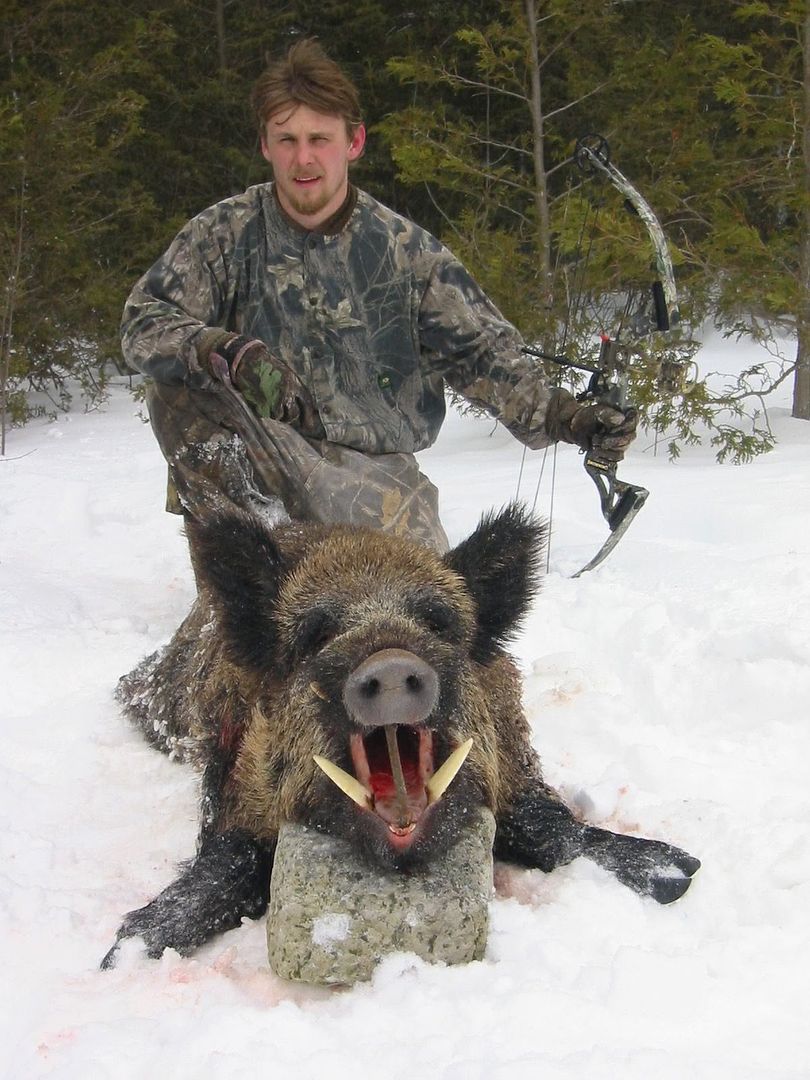
 Wild boar hunting has been around for thousands of years, from the Persians’ first attempt of slaying these creatures, but it has really become known in the medieval times when royalty and rich people used to hunt boars as a way of entertaining themselves and their guests. Over the years, wild boar hunting hasn’t lost any of its appeal and is now just as popular as it was in Elizabethan England, almost five hundred years ago. So what is it that makes hunting boars such timeless practice?
Wild boar hunting has been around for thousands of years, from the Persians’ first attempt of slaying these creatures, but it has really become known in the medieval times when royalty and rich people used to hunt boars as a way of entertaining themselves and their guests. Over the years, wild boar hunting hasn’t lost any of its appeal and is now just as popular as it was in Elizabethan England, almost five hundred years ago. So what is it that makes hunting boars such timeless practice?A likely explanation could lie in the fact that the boar is a formidable opponent, which never can be brought down easily. Wild boar hunting is neither for the faint of heart nor for solo hunters, because this animal can prove to be a vicious fighter that never surrenders without a fight. In spite of its aggressive nature, this omnivore is tranquil if not threatened, and almost never deliberately attacks humans. The sole situation in which you are strongly advised to stay as far as possible from a boar is when it has cubs (piglets) and they are beside their mother. She will do anything to protect her young from any danger they may be facing and that is why, the boar being constantly a challenge and a threat, we are drown towards hunting it over and over again.
Resembling more or less any other form of hunting, wild boar hunting involves luring the unsuspecting creatures towards you and not having to search for them yourself. One way to bait for them is to dig a hole of one or two feet depth and one or two feet across, placing some bait in the bottom and cover it with a layer of dirt. A different way to tempt boars is to use a 10-13 cm pipe that will be cut into two or three foot pieces with caps on each end. These are low-cost and efficient luring solutions which will make the whole hunting experience much easier.
 Choosing the appropriate spot to place your bait can be delicate as the boars have excellently developed senses and will probably detect your presence, thus making them suspicious of an easy meal. That is why a baiting spot should be chosen someplace easy to get to, away from any bedding areas and, if possible, right next to trails, flounders and other often used areas. The location you choose is extremely important to your success (even more important than the method used), above all when there aren’t that many boars around.
Choosing the appropriate spot to place your bait can be delicate as the boars have excellently developed senses and will probably detect your presence, thus making them suspicious of an easy meal. That is why a baiting spot should be chosen someplace easy to get to, away from any bedding areas and, if possible, right next to trails, flounders and other often used areas. The location you choose is extremely important to your success (even more important than the method used), above all when there aren’t that many boars around.To put it briefly, wild boar hunting appears to stay with us throughout the ages and it would seem to continue to be a part of our hunting customs for years and years to come. Even though, hunting for boars has radically changed its ways in comparison to the way it used to be done centuries ago, it still maintains its essence and spirit, whether we comprehend it or not. After all, the beauty of something rests in what the naked eye cannot see and in what the mind can.

very nice post thanks for sharing it.
ReplyDeleteRifles Guns in Australia